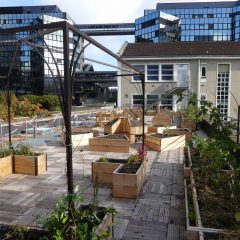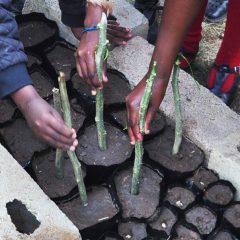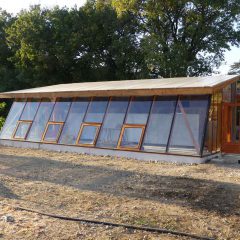To mulch, consists in a garden, to imitate nature and to cover the soil, around the plantations.
By observing nature, we can notice that we don’t find bare soil. In the forest, the soil is covered with dead leaves (litter) and various plants. In grassland, grasses quickly populate the soil, even after “weeding”.
In reality, these plants have a role: they are there to protect the soil and its small inhabitants.
By putting mulch around our plantations, the moisture of the soil will be conserved, as in a forest, and we will have less need to water. Soil fauna will also be able to grow and provide the nutrients and aeration needed for fertilization. The soil will also be protected from wind and rain, as well as extreme temperatures, which will limit its erosion.
The darkness caused by the mulch will also limit the growth of undesirable plants that could hamper our plantations and draw nutrients from the soil at the expense of crops.
In order to conserve natural resources, maximum use is made of materials found around the house, which would otherwise be disposed of in waste or have the capacity to be renewed easily, such as nettles, lawn mowing or dead leaves.
This practice therefore has many advantages:
– Soil moisture is conserved and water requirements are reduced
– By the contribution of carbonaceous material, soil fauna develops, which will bring the necessary nutrients and aeration to the soil
– The soil is protected from wind and rain, as well as extreme temperatures, which will limit its erosion.
– The darkness caused by the mulch will limit the growth of undesirable plants that could hinder our plantations and draw nutrients from the soil at the expense of crops.
In the same category :






